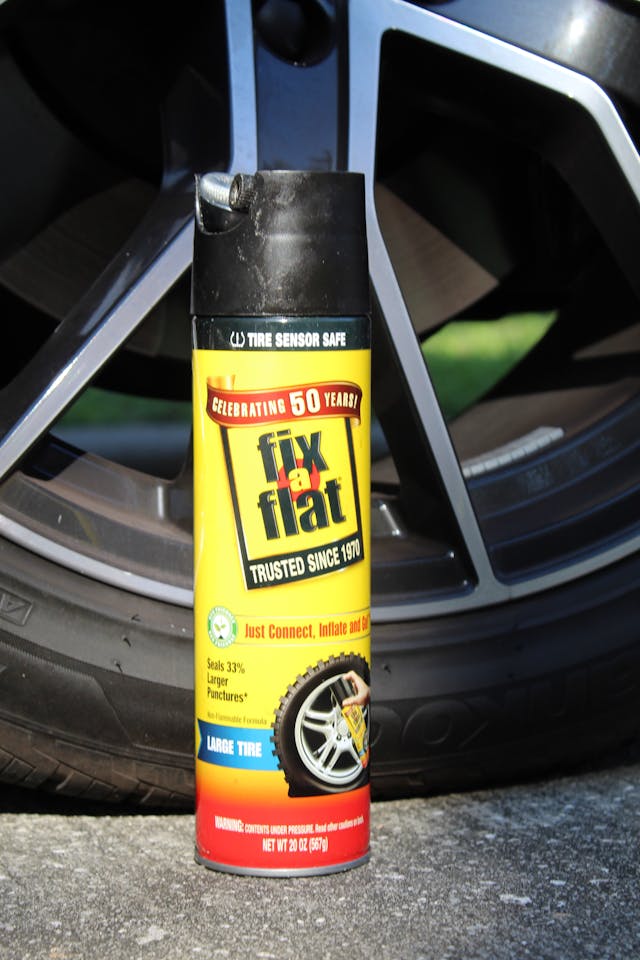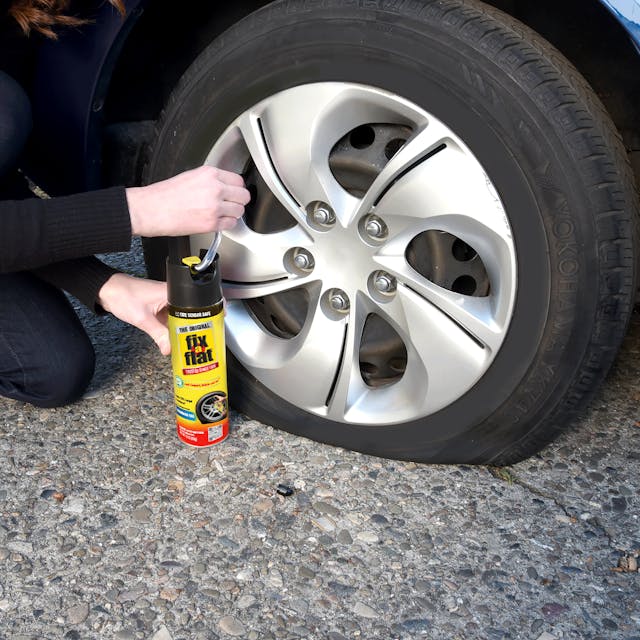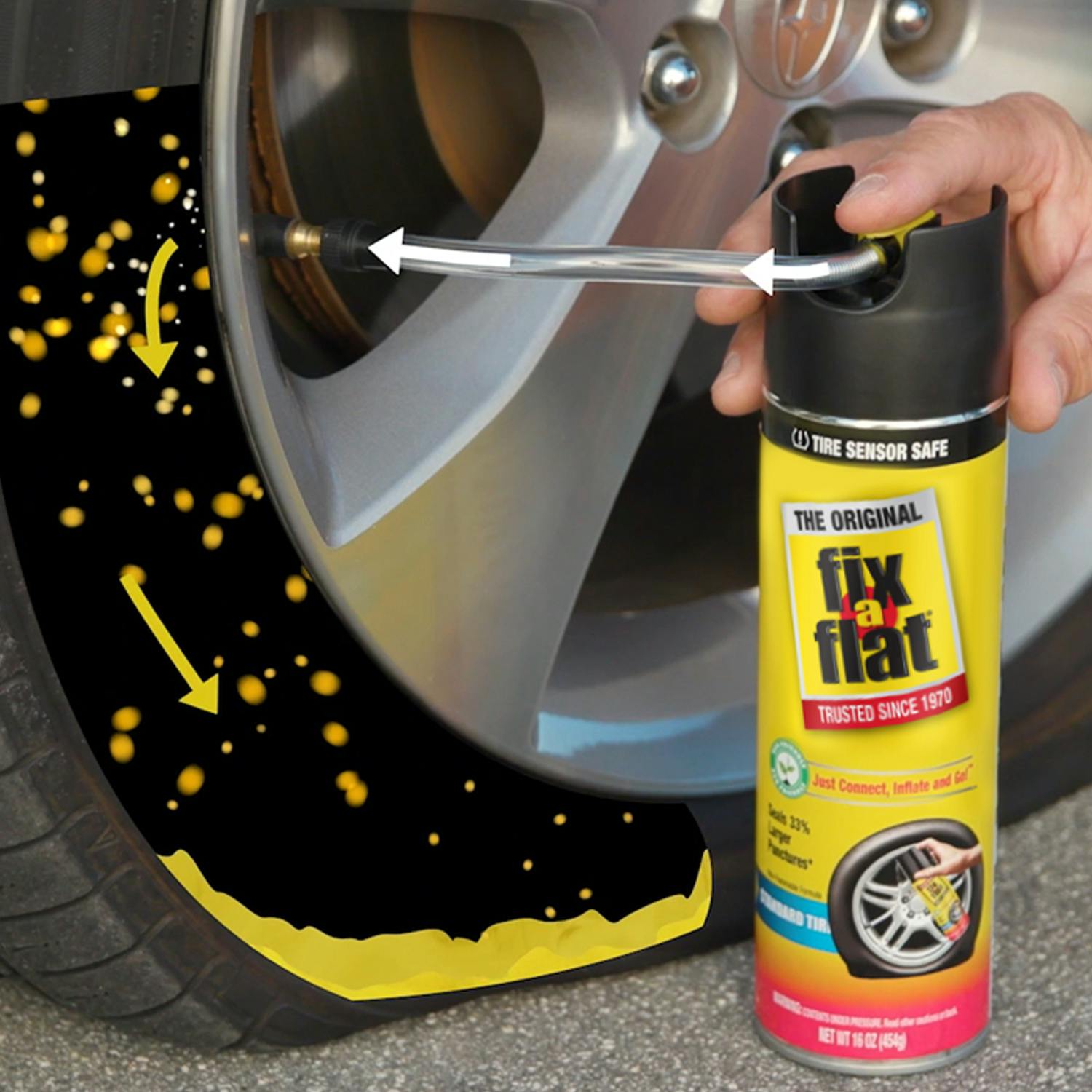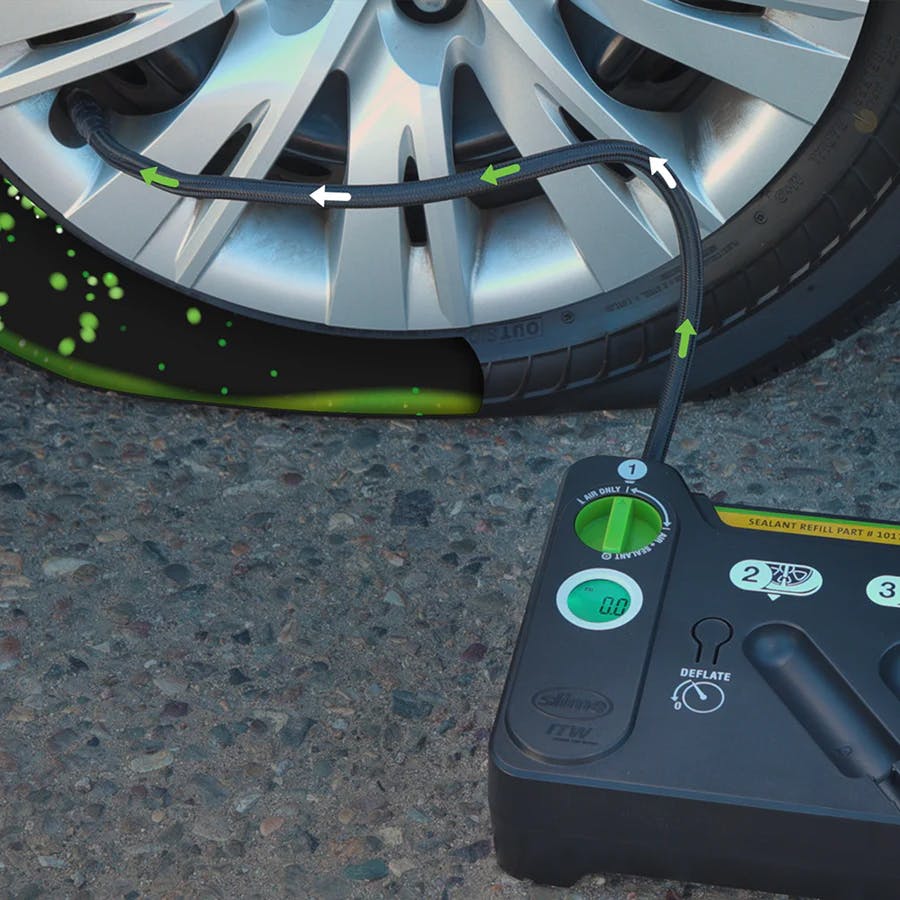Fix-a-Flat: A half-century of temporary tire repair
It’s 5 a.m., raining, and you’re on a bridge, in an active construction zone, with no lighting and little room to pull off. Or maybe it’s 5 p.m., rush-hour traffic is bumper-to-bumper, moving along at 20 mph and there’s no shoulder. Make up your own horror scenario for the worst time to get a flat tire. We all know it seldom happens when and where conditions are perfect for a roadside repair.
Changing a tire assumes two things: having a spare tire on hand, and a being in a safe place to change it. More and more vehicles are coming from the factory without even a down-sized spare, instead making do with what’s regarded as a “tub of goo,” and a tiny air pump that plugs into your cigarette lighter. The only other route is usually to call for roadside service from AAA or another agency (like Hagerty Driver’s Club!), but there can be a wait, while you could well be sitting in a precarious position in your car.
In this situation, there may be a 52-year-old solution. That’s how long ago Fix-A-Flat was invented by the Snap Corporation and marketed—as it always has been, but by different owners—as a temporary flat-fix that can be applied in as little as four minutes. The idea is to get you back on the road quickly, so that you can either get off the road safely or find a service station with an air pump and possibly even tire repair capability.
I’ve used Fix-A-Flat at least a dozen times over the decades, with two failures—I’ll tell you about them in a moment. Suffice to say for now that my successes got me, usually, to a gas station or convenience store where I was able to buy supplies for a more permanent fix. A parking lot or tire change in a parking lot is relatively safe and comfortable compared to the shoulder of a fast-moving freeway.

The current Fix-A-Flat product contains polymer latex, slightly similar to the latex in paint, and an accelerant. A six-inch clear plastic hose is attached to the top of the can, with an adapter on the end that attaches to your tire stem. (If it’s night, and you have no flashlight, use your cell phone to find it.) Remove the valve stem cap and screw the little hose on, tightly. When done, hold down the button until the can is empty. Until the can is empty. The accelerant in the can should have put enough air in your tire to get the rim off the ground. Drive immediately to help build up pressure and distribute the latex around the inside of the tire – two miles is recommended. Read the instructions on the can for more detail.
Fix-A-Flat—and yes, there are other brands, but some are actually made by Fix-A-Flat, including the slightly more upscale product (really) called Slime—comes in several different sizes, from small-car-sized to big cans for pickup trucks. I usually buy the next-biggest can for the size of the application. Prices start at about $10.
At best, Fix-A-Flat will get you to an air source. There isn’t enough air in the can to fill the tire to proper inflation, or even what appears to be sufficient. If you don’t have a tire gauge, get one, and air up your tire to what is listed on the car door jamb. If you can’t find the information, 30 pounds is a good average minimum.
What are the biggest negatives to using Fix-A-Flat? One misconception is that the latex will gum up the internal Tire Pressure Monitoring System. “Wrong,” said Chad Ellman, marketing director for ITW, the owner of Fix-A-Flat and Slime. “It’s all water-based,” which means a soapy shop rag should clean the TPMS up. “A tire company is just trying to sell you a new one if they tell you Fix-A-Flat ruined it.”
Similarly, Fix-A-Flat has been criticized for adhering to the inside of the tire, preventing a proper external patching job, which is the only type of repair recommended by tire manufacturers. “A proper repair involves grinding the rubber slightly so the patch will hold, regardless of whether Fix-A-Flat is use,” said Brendan Sangster, new product development manager for ITW. Plugging a tire puncture is no longer considered safe by the tire industry, but I’ve done it in dire situations, such as on Christmas Day in the middle of a trip.
Finally, at one time Fix-A-Flat was (rightly) criticized for using a flammable propellent that could be dangerous for users, especially if the tire repair person was smoking. But that ether-like substance was replaced years ago by an environmentally-friendly aerosol propellant.

Your supply of Fix-A-Flat, the company says, should be changed out every two years with a fresh can. The date of manufacture is printed on the bottom of the can—the first two numbers are the year in which it was made.
For me, I experienced two instances in which Fix-A-Flat didn’t work: Once was when the puncture was on the sidewall of the tire, which makes sense given the company makes no claims about repairing sidewall damage. The other time was quite recent, and on a performance car. The Fix-A-Flat flowed in, and nothing really happened except for a slight and very temporary pressure enhancement. In the case of a large puncture—bigger than a quarter-inch in the tread—the latex will usually flow out, unable to seal the puncture. But nothing flowed out. It was then that I realized the car had “quiet” tires, characterized by a comparatively thick layer of soundproofing foam that is glued to the inside of the tread to help deaden sound, mostly in summer tires. The latex couldn’t reach the puncture and therefore couldn’t plug it. Quiet tires are usually indicated as such on the sidewall by a trade name; Continental, for instance, calls its product “ContiSilent.”
The car came with a similar “tub of goo” and an air pump, but since the goo is similar to Fix-A-Flat (the company, in fact, manufactures the goo for many of OEMs) it likely wouldn’t work, either. And since the replacement goo can cost $90, I didn’t try. Admitting, defeat, I called and waited for roadside assistance (three hours, because I’m lucky) to tow it to the nearest dealer.
Bottom line: Always consider your car’s factory-supplied flat tire solution as the first line of defense. If you have a spare tire, check its air pressure at least once a year. More often than you’d think, it only looks as though it’s full of air, and circumstances will let you down if you allow pressure to drop too much. Keep in mind that lower temperatures reduce air pressure inside your tires. And if you don’t know how to change a tire, learn. Read your manual to understand what you have, what you don’t have, and how the components work.
John Rastetter, a tire information ambassador for Tire Rack, agrees that while Fix-A-Flat perhaps shouldn’t be your first choice, “It’s great in an emergency situation when you can’t change a tire,” he said. “It works to help get a driver out of a jam.”




